SaaS Pricing Models Explained: How to Choose What Works for Your Business
Updated: January 23, 2025
When developing a SaaS app, deciding on the pricing strategy is as important as the app’s features. For example, usage-based pricing, adopted by 38% of companies, allows customers to pay for what they actually use, aligning costs with individual needs and boosting satisfaction. After all, even the most groundbreaking app can flop if customers can’t afford—or justify—its price.

We provide companies with senior tech talent and product development expertise to build world-class software. Let's talk about how we can help you.
Contact usAs a trusted SaaS development company, Relevant Software experts believe that pricing in SaaS products is about delivering a value proposition that customers find irresistible rather than simply covering costs. So, how should you go about structuring effective pricing models for SaaS that sell? Using our experience and knowledge, we will help you choose the most suitable model for your SaaS product as well as review the most popular pricing strategies along with their pros and cons.
Table of Contents
What is SaaS billing?
At its core, SaaS billing refers to the process of managing payments in subscription-based businesses. Unlike one-time purchases or traditional software licensing, SaaS billing is a recurring affair, where customers pay fees monthly or annually for access to the software and its services. But there’s more to it than simply charging a credit card every month. SaaS billing models combine multiple components to create a seamless, efficient, and customer-friendly system.
Pricing models
Pricing models define how businesses charge their customers and come in different shapes and forms for any taste. For instance, usage-based models charge customers based on what they actually use—perfect for scaling businesses. On the other hand, flat-rate models offer simplicity, appealing to those who value predictability.
Invoicing
A good SaaS billing system creates detailed, accurate invoices that clearly break down charges. Your pricing should make it obvious to customers what services they’re getting for their money.
Recurring payments
Recurring payments automate the process and make it simpler for customers to be billed on schedule without delays. Done right, this minimizes churn caused by failed payments. Done wrong? Well, let’s just say customer frustration isn’t great for retention.
Subscription management
Finally, there’s SaaS billing management responsible for managing plan changes, cancellations, and subscription renewals. Let’s assume a customer wants to switch to a higher tier mid-month—subscription management ensures this happens effortlessly for both parties (you and your customer).
What are SaaS pricing models?
If you’ve ever signed up for a streaming service, upgraded your cloud storage, or subscribed to a productivity tool, you’ve already encountered SaaS pricing models in action. But what exactly are they? In simple terms, SaaS pricing structures define how subscription-based software businesses charge their customers. They let companies turn the value they offer into ongoing income through subscriptions that cater to diverse customer preferences.
Now, what is SaaS pricing, and how does it differ from traditional software pricing? Traditional software typically involves a hefty one-off cost for permanent access, often paired with added costs for upgrades or assistance. SaaS, on the other hand, takes a more flexible and customer-friendly approach: users pay a recurring fee—monthly, annually, or based on usage—for ongoing access to software hosted in the cloud.
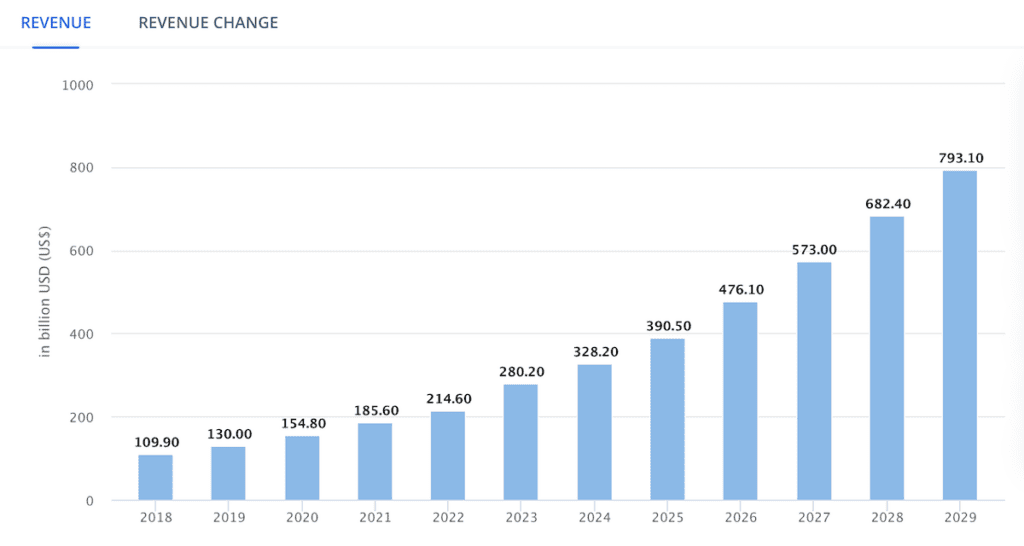
Image title: SaaS market size worldwide
Source: Statista
Well-thought-out SaaS pricing strategies can attract the right customers, encourage long-term loyalty, and maximize revenue. Choose poorly, though, and you risk alienating users or leaving money on the table.
Types of SaaS pricing models
Different businesses—and their customers—have different needs, which is why a variety of pricing models exist to fit every scenario. The goal? Balance value for the customer with sustainable revenue for the company. Here’s an overview of the most popular pricing models and how they work.
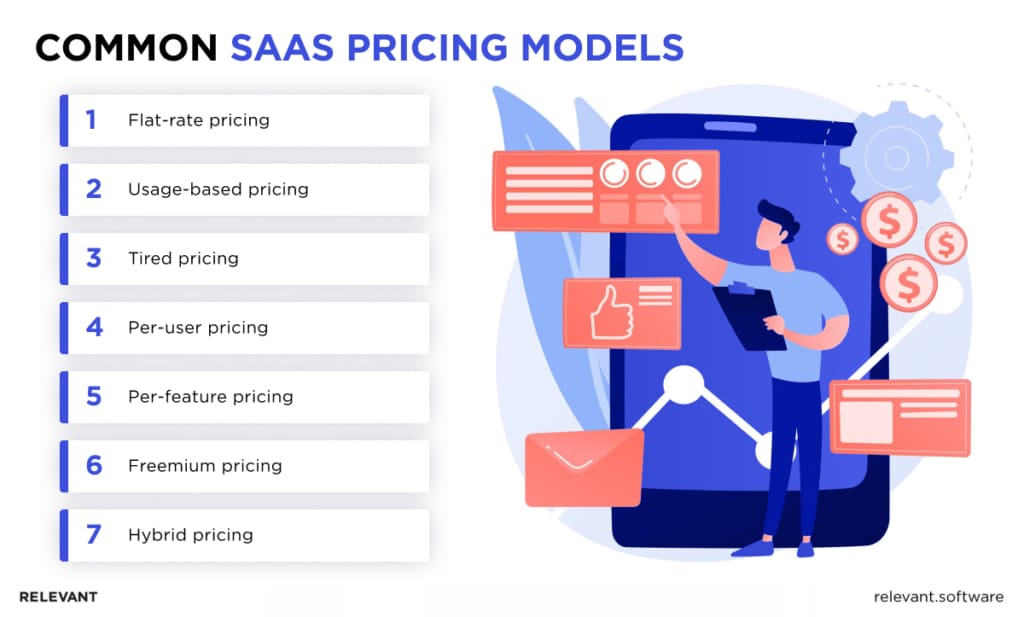
Flat-rate pricing
It’s the simplest of all pricing models, and for some businesses, it works like a charm. In this model, customers pay a fixed fee for unlimited access to all features and functionalities of the software, regardless of usage.
Pros:
- Simplicity: Easy for customers to understand and just as easy to explain in your marketing.
- Transparency: Customers can easily see the value they’re receiving for their payment.
- Ease of Execution: No complicated billing systems are required.
Cons:
- Limited Scalability: It doesn’t cater to customers with varying needs or budgets.
- Value Mismatch: Some users may feel they’re overpaying for features they don’t need, while others might feel they’re getting a steal.
Examples: Flat-rate pricing is often regarded as advantageous in industries with straightforward offerings, such as video conferencing tools, antivirus software, or email marketing platforms. Basecamp is a prime example, charging a flat fee regardless of team size.
Usage-based pricing (Pay-As-You-Go)
Customers are charged based on how many resources they use, like paying for data storage in the cloud, bandwidth consumption, or other metrics.
Pros:
- Fair Pricing: Payment is based entirely on the customer’s actual use of resources, which feels fair and approachable.
- Low Barrier to Entry: It’s appealing for startups or small businesses that want to start small and scale as needed.
- Flexibility: Fits perfectly for businesses with variable needs.
Cons:
- Revenue Predictability: It can be challenging to forecast income, especially during periods of fluctuating usage.
- Complex Billing: Tracking and charging for usage can require advanced tools and precise calculations.
Examples: It’s highly popular in industries like cloud computing and API services. Think AWS services or Twilio, where usage determines the bill.
Tiered pricing
Customers choose from multiple subscription plans with varying levels of features, user access, or resource limits. Higher tiers typically include more advanced functionalities and higher usage limits.
Pros:
- Diverse Appeal: Tiers allow you to cater to various customer groups, ranging from cost-sensitive startups to large-scale enterprises.
- Predictable Revenue: With set tiers, it’s easier to forecast revenue and growth.
Cons:
- Complex Setup: Defining the right tiers and feature allocations can be a strategic headache.
- Overwhelming Choices: Too many tiers can confuse potential users and result in decision fatigue.
Examples: Collaboration tools like Slack and project management platforms such as Asana or Trello use tiered pricing to target different types of users, from individuals to large organizations.
Per-user pricing
Here, the cost depends on the number of active users or licenses you need. Think of it as a “pay-per-chair” system for teams.
Pros:
- Easy to Scale: As a company grows, their subscription grows with it—simple and predictable.
- Team Alignment: It directly correlates with customer growth, making it intuitive for businesses to add new team members.
Cons:
- Cost Sensitivity for Large Teams: Bigger organizations may hesitate if costs scale too high too quickly.
- Limits Revenue from Power Users: Companies with small teams but heavy usage might seem undervalued in this model.
Examples: Per-user pricing is successfully employed in tools like Salesforce (CRM) and BambooHR, where teams of any size can start small and grow their subscription alongside their business.
Per-feature pricing
Customers pay only for the specific features or modules they require, letting them, in fact, assemble their own custom solutions.
Pros:
- Customizable Experience: Businesses pay only for what they need, making it attractive for organizations with specific requirements.
- Perceived Value: Customers feel empowered by selecting features that directly address their pain points.
Cons:
- Decision Paralysis: Offering too many choices can confuse customers.
- Challenging to Structure: Defining which features belong in which tiers requires careful strategy.
Examples: Modular enterprise solutions like SAP or Oracle thrive with per-feature pricing, offering add-ons tailored to complex business operations.
Freemium model
Freemium SaaS billing offers a basic version of the software for free, with premium features or increased usage limits available for a fee. So, essentially, it’s the “try before you buy” approach but for software.
Pros:
- Low Entry Barrier: Free plans encourage users to test the product with zero risk.
- Rapid Growth: It’s easier to attract a large user base, creating opportunities for upselling.
Cons:
- Low Conversion Rates: Getting free users to upgrade to paid plans can be tough.
- Resource Strain: Free users still require support and infrastructure, which can add costs.
Examples: Productivity tools like Trello and note-taking apps like Evernote masterfully use the freemium model and entice users to upgrade for advanced features.
Hybrid pricing models
As the name suggests, hybrid pricing plans combine elements of several pricing models. For example, a flat-rate fee for core features with per-user charges for additional users or a freemium model with tiered pricing for premium features.
Pros:
- Flexible Appeal: It appeals to a wide variety of customer needs, from startups to enterprises.
- Versatile Revenue Streams: By combining strategies, businesses can target both individual users and large organizations.
Cons:
- Complex Execution: Communicating and managing hybrid plans can be challenging.
- Potential for Confusion: Customers might struggle to understand what’s included in each offering.
Examples: Platforms like Zoom seamlessly blend freemium, per-user, and tiered pricing, making their services accessible to individuals and global enterprises alike.
5 Steps to create an effective SaaS pricing model
Creating a SaaS pricing model is both an art and a science because you need to balance customer value and business goals with market dynamics to arrive at a structure that works for everyone.
As Anna Dziuba, VP of delivery, puts it: “The best pricing models feel like a natural extension of the product. Customers shouldn’t have to think twice about whether it’s worth it—that decision should be obvious.“
Based on Relevant Software’s expertise, we outlined the steps you can follow to build a pricing model that hits the sweet spot.
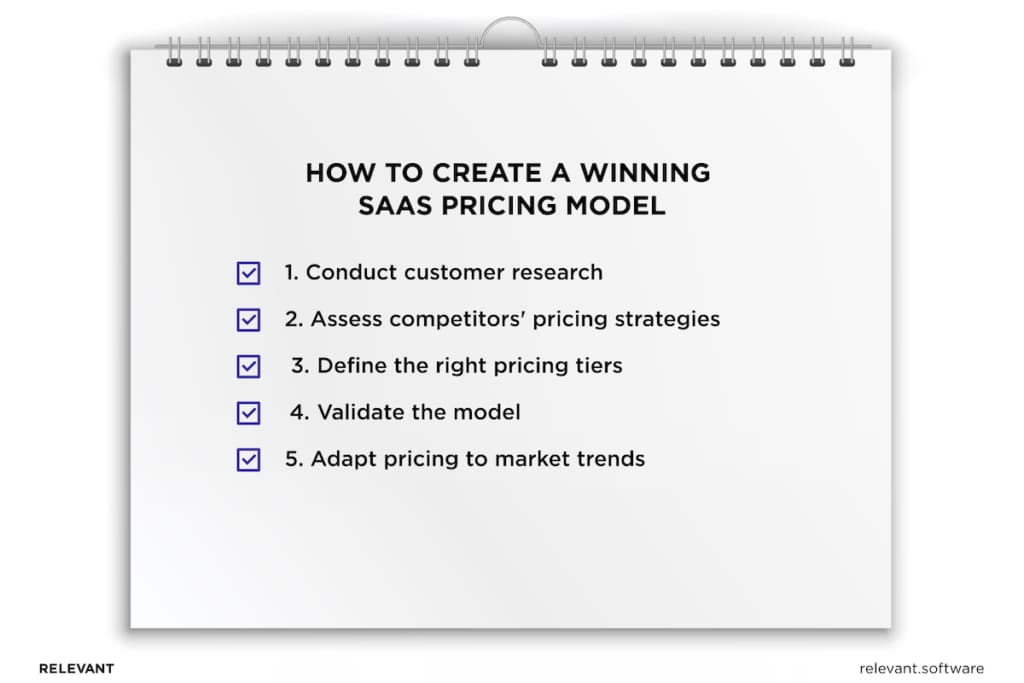
1. Conduct customer research and identify key personas
As we have emphasized several times already, SaaS pricing strategies are predominantly about your customers and their needs. Talk to them, listen to their pain points, and understand what your product’s features entice them most. Build detailed personas that represent different customer segments. Is your ideal user a budget-conscious startup founder? Or a large enterprise looking for premium features? Knowing who you’re pricing for is half the battle.
2. Assess competitors’ pricing models
Competitors can be your best teachers. Study their pricing plans to understand industry norms and where you can differentiate. Do they overload customers with confusing tiers? Or probably they underprice features that are critical? Your goal isn’t to copy them—it’s to find your edge.
3. Define pricing tiers based on customer needs and feature usage
A good SaaS pricing strategy speaks to different customer segments without alienating anyone. Relevant Software experts advise starting with clear, easy-to-understand tiers that reflect real-world needs. Each tier should offer enough value to stand alone while encouraging upgrades. For example, you can offer a basic tier for small teams, a mid-tier for growing businesses, and a premium plan for enterprises. Try to keep it simple because too many options can overwhelm you.
4. Validate the model with A/B testing or pilot programs
Once you’ve built your pricing model, test it. Use A/B testing to see which options resonate with your audience, or launch a pilot program to gather real-world feedback. Pricing is as much about perception as it is about numbers, so make sure your customers see the value in your offering. Your first idea is rarely your best idea, and feedback is gold.
5. Regularly review and adapt pricing to market trends
The SaaS landscape is dynamic, and your pricing model should be reviewed from time to time to remain competitive and keep customers happy. Therefore, Relevant Software’s business analysts with expertise in SaaS recommend tracking customer behavior, competitor changes, and industry shifts to be able to adjust your pricing strategy accordingly. The worst thing you can do is set your pricing in stone.
Best practices for SaaS billing and pricing
Given Relevant’s 10+ years of experience in SaaS application development, we know for sure that the SaaS billing system and pricing should communicate the value your product delivers in a way that resonates to be successful. Our SaaS specialists have gladly shared some tips that will help you create a perfect strategy that will benefit you and your customers.
Adopt value-based pricing
The best SaaS pricing models should not be founded on your product’s costs but rather on what it’s worth to your customers. Value-based pricing is quite a popular model used by as much as 39% of SaaS organizations and focuses on what customers are willing to pay based on the benefits they perceive. Emphasize the advantages users derive from using your software. It can be increased efficiency, productivity gains, or cost savings.
“The price of your SaaS product isn’t what you think it’s worth—it’s what your customers think it’s worth,” explains Anna Dziuba, VP of Delivery.
To implement this, talk to your customers or carry out surveys. Understand how your product solves their problems and what features they value most. Use this data to set prices that reflect both the value delivered and your business goals. Remember, customers are more likely to stick around if they feel they’re getting real bang for their buck.
Conduct regular pricing reviews
In the SaaS world, standing still equals falling behind. Pricing that worked a year ago might not cut it today. That’s why regular reviews of your pricing ensure your plans remain competitive and attractive to your target audience as well as aligned with market trends.
Here’s how to do it right:
- Track Metrics: Monitor customer behavior, churn rates, and conversion trends to spot opportunities or issues.
- Test Changes: Use A/B testing to gauge reactions to new pricing before rolling it out fully.
- Communicate Clearly: When implementing price changes, be transparent with your customers. Highlight how the changes reflect added value or improvements.
As Relevant Software SaaS specialists advise, “Pricing should be as dynamic as the market you serve. By making pricing reviews a habit, you’ll maintain your edge and reinforce your value proposition.”
Ensure compliance with global regulations
B2B SaaS billing is a minefield of global regulations, from GDPR and CCPA to tax compliance and cross-border billing laws. We believe there is no need to tell you how important it is to comply with all the legal standards your business is subject to, but we only emphasize that it’s rather challenging to follow them on your own.
To simplify this complexity:
- Use SaaS Billing Platforms: Many platforms are designed to handle global compliance, automating tax calculations, currency conversions, and regulatory updates.
- Stay Informed: Keep an eye on changing laws, especially if you operate in multiple regions.
- Focus on Transparency: Make sure your billing practices are clear and honest and reflect your commitment to ethical business practices.
SaaS billing success stories
In SaaS, how you bill is almost as important as what kind of a product you build. That’s why the most successful SaaS companies put just as much thought into their billing strategies as they do their products. Many of Rlevant’s clients say that they treat pricing as part of their overall SaaS growth strategy, which helps better optimize revenue streams. Here are some inspiring SaaS pricing model examples for you to learn from.
How Slack scaled using tiered pricing and automated billing
When Slack launched, it knew simplicity was key to attracting teams of all sizes. Its tiered pricing model, combined with automated billing, allowed businesses to start small and scale as their needs grew. Slack’s “freemium-to-premium” transition, with clear upgrade options, made it easy for users to see the value of paid features.
Thanks to this combination of a well-thought-out pricing model and the convenience of automated billing, Slack rapidly scaled to one of the most dominant workplace communication platforms, with 10 million daily users in just a few years. They managed to build customer loyalty and cater to businesses of all sizes by offering flexible pricing options.
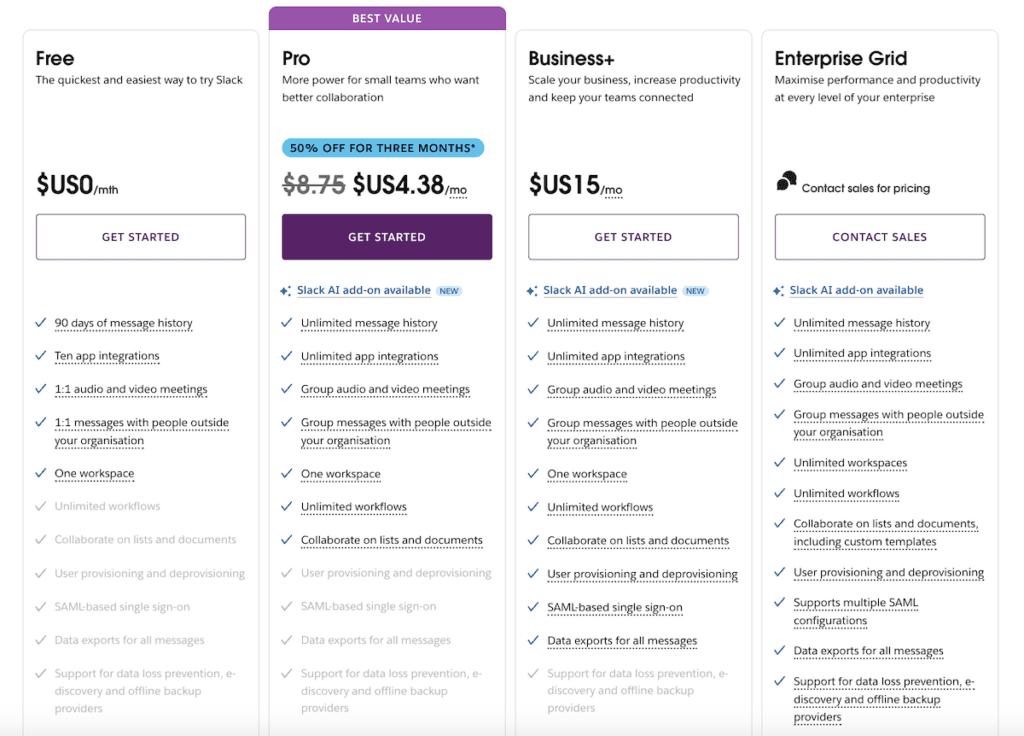
Source: Slack
How AWS’s usage-based billing approach impacted their customer acquisition
Amazon Web Services (AWS) revolutionized the cloud computing landscape with its pay-as-you-go model. By charging customers based on usage—whether it’s storage, computing power, or data transfer—AWS made advanced cloud technology accessible to startups and large enterprises alike. Users can scale their usage (and costs) according to their current needs without the need for large upfront investments.
AWS’s approach to pricing proved highly successful and helped them acquire customers incredibly fast and become the major player in the cloud computing market. By 2015, AWS achieved a revenue run rate of $6.3 billion nine years after its launch.
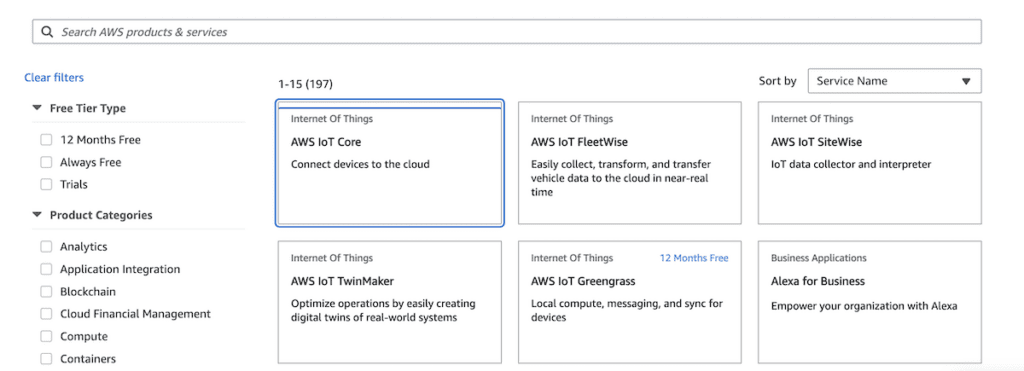
Source: Amazon
How Netflix’s hybrid pricing model drives user retention
Netflix needed to balance affordability with revenue growth while maintaining high customer satisfaction. What did they do? They combined tiered subscription plans offering different video qualities and simultaneous streaming options with regional pricing adjustments to solve their problem. Users can choose from basic, standard, and premium tiers depending on their budget and viewing habits. At the same time, they encourage customers to upgrade to higher-tier plans for enhanced viewing experiences.
Flexible subscription options allowed Netflix to retain a large and loyal subscriber base while continuously expanding their content library and improving their service offerings.
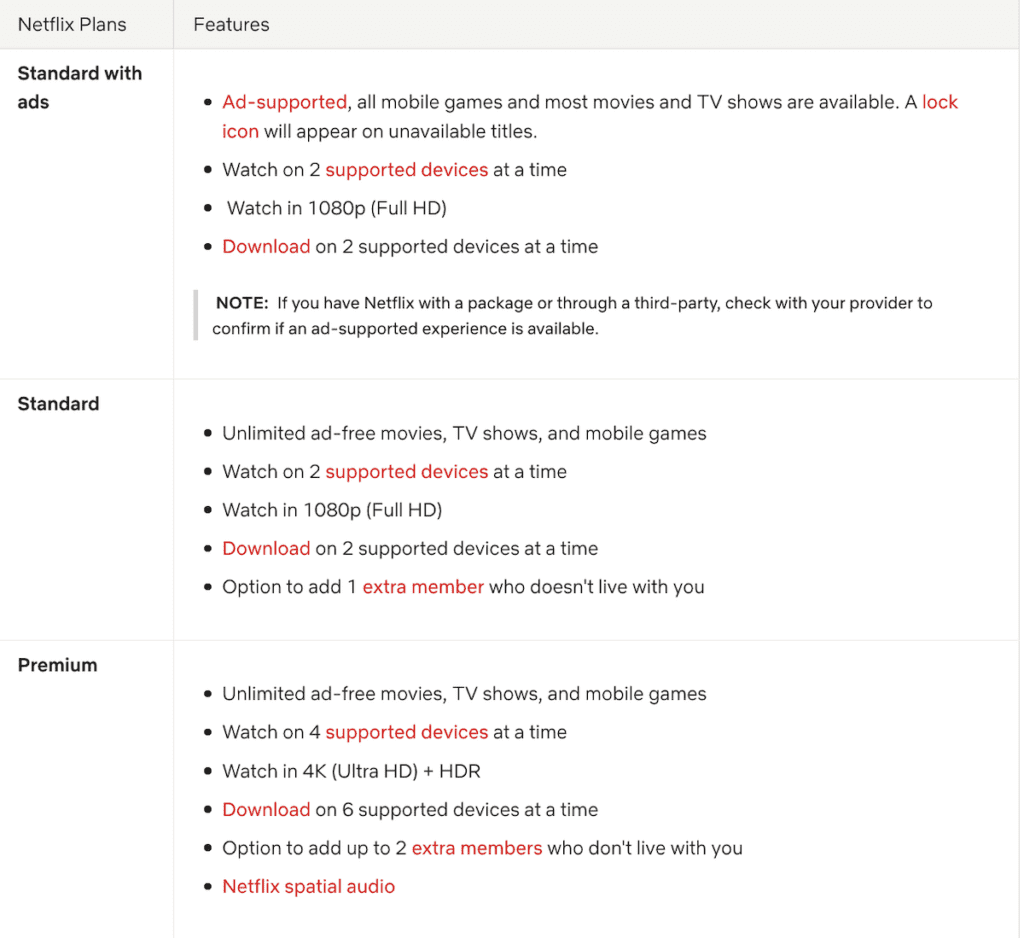
Source: Netflix
Our SaaS success story
At Relevant Software, we’ve seen firsthand how the right strategy can turn an idea into an impactful product that truly changes lives. That said, here’s the story of one of our clients to show you how user-centered development coupled with strategic pricing and a robust go-to-market plan can make all the difference.
SaaS home buying solution that simplifies the process for first-time buyers
FirstHomeCoach, a UK-based fintech startup, wanted to simplify one of the most stressful processes out there: buying your first home. They needed a SaaS platform that doesn’t just advise but actively guides users through saving for a deposit, getting a mortgage, and navigating legalities—all tailored to individual needs. On top of that, the system had to be secure, scalable, and flexible enough to offer certain features, like their mortgage calculator, as white-label solutions.
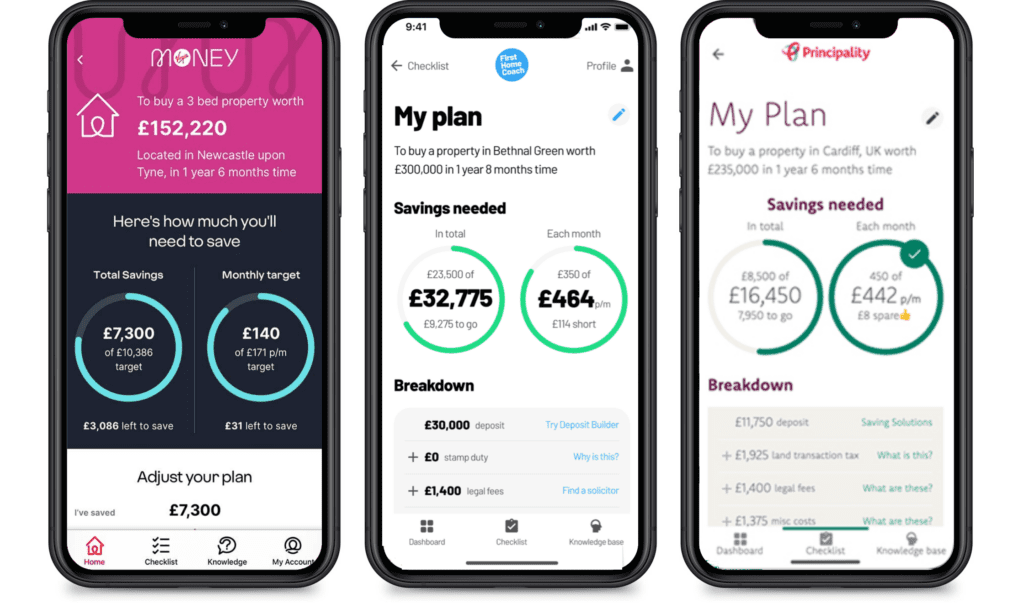
We built a custom SaaS solution from scratch, using a microservice architecture to meet our client’s security and scalability requirements. Relevant’s development team created features such as a deposit builder and a personalized property-buying plan, which, along with third-party banking integrations, made the SaaS platform a trusted tool for first-time buyers. In just its first year, FirstHomeCoach helped over 5,000 users plan their journeys to homeownership, processing 40,000+ data points with ease.
SaaS pricing models: Bottomline
From Relevant Software experience as a software development firm that collaborates with SaaS organizations, whether you’re building your first SaaS platform or scaling an existing one, the key is to put your users’ needs first when creating pricing strategies. Here are the main three things for you to remember about effective strategies:
- Charge based on value, no exceptions. It’s the gold standard for SaaS pricing.
- Focus on the right audience. Your pricing tiers should speak directly to your ideal customers, catering to their needs and budgets without compromises.
- Simplicity is key. A clear, straightforward pricing structure makes it easier for customers to buy in.
Our core services:
Do you want a price estimate for your project?
Do you know that we helped 200+ companies build web/mobile apps and scale dev teams?
Let's talk about your engineering needs.
Write to us











